Hello Everyone!
A few weeks ago I was invited to present at the South Eastern Reading Recovery Conference in Myrtle Beach. I was actually invited by my favorite professor (and mentor) from grad school. To say that I was humbled and honored is an understatement.
I have HUGE respect for Reading Recovery teachers because they are the real deal.
They also know how to TRULY help a struggling reader. I’ve seen it first-hand and I cannot compare myself to them.
So my initial thoughts were:
Anyhow, one of the most recurring questions in my sessions had to do with the things that I do to set up close reading routines with my students.
According to Fisher & Frey:
As a result, it is important to remember:
Close Reading is challenging. As a teacher you need be able to model and show your students the differences with guided reading.
The very first time I attempted close reading with my students, one of them told me that close reading is like peeling an onion because you uncover layers and layers.
My wheels were turning.
Then, my sweet teacher friend Krystal from next door also mentioned that she had seen something similar on Pinterest where a teacher used an Oreo cookie to introduce close reading to her students.
The wheels kept on turning. Then I figured I would do this:
Of course I thought about this like at 9:30 at night when I was taking a bath with calming oils.
I usually keep tangerines in my house for me and my boys, but I was out. People at my school may have thought that I was going coo-coo when they received my text messages asking if they had tangerine oranges in their homes. My beautiful and stylish literacy coach even offered to stop by the grocery store to get fruit. So sweet. I ended up going to the closest Harris Teeter before school and I purchased a big bag of “cuties.”
But why a tangerine? And what does a tangerine have to do with the phases of close reading?
Let me begin by showing you the phases of a close read:
Some researchers may use terms like cold read, hot read, or warm read to name the phases of close reading.
Just like in the second read where we discuss vocabulary, author’s purpose, and my favorite: text structure.
For stage three or “what does the text mean” I asked the pairs to eat their tangerine. I asked them questions related to their thoughts about the tangerine:
What did it taste like and why?
For example.
For stage four or “what does the ext inspire you to do” I asked for their personal opinion about the tangerine using evidence from their experience.
Pretty neat. Kids loved it and made true connections to our goal: understanding the phases of close reading
But why going to all the trouble about finding tangerines for this activity in the middle of the night?
Very simple:
A couple of years ago I decided that I was going to start a vegetable garden. I bought books, seeds, Honey Graham built two raised beds, and he ordered some manure enriched soil. This was close to our anniversary, so when my mom asked what gift I had received, I openly told her that he had given me a pile of sh.
Here I am with all this stuff in front of me and no tools. Not. A. Single. One.
I had to go and find some little plastic shovels out of the boys’ beach toys pile.
So what if I had done this wonderful tangerine lesson and my firsties had no idea what to do when I asked them to read closely.
In the primary classroom, a close reading MUST be guided by the teacher the whole time. There is no sit over there with this paper and answer these questions. That is NOT a close read. I would call that a worksheet.
Isn’t our job to prepare kids for anything? Aren’t we supposed to give them the tools to do so?
What is inside this jar?
- Three markers: each marker is for the first three phases of a close read. I put these labels on each of the markers so the kids know what to do and when.
You may download this set of labels by clicking HERE!!! the labels are Avery 5160.
There is also a cool pencil, a cool eraser, and these bookmarks:
Yes! These three think marks are what research considers appropriate for a close read. You can download them by clicking HERE!!!
These are the labels that you can put on the jars. You can get them by clicking HERE!
Oh, BTW… the jars came from Oriental Trading Company.
Oh anchor charts and Thinking Maps… how I love you so.
I am going to let these pictures of this anchor chart speak for themselves.
I am an anchor chart aficionado. In my experience, they offer an opportunity for my students to process deeply when they are offered as an initial experience.
In case you are interested, you can stop by my TPT store and check out my close reading passages and booklets.
Take a look at some of them {click on the link to learn more}:
I hope that you have found these tips useful and they can help you set up classroom routines for your students.
Until next time!


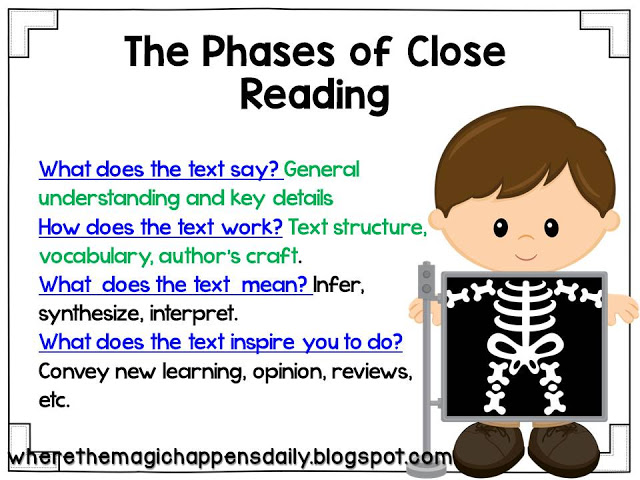


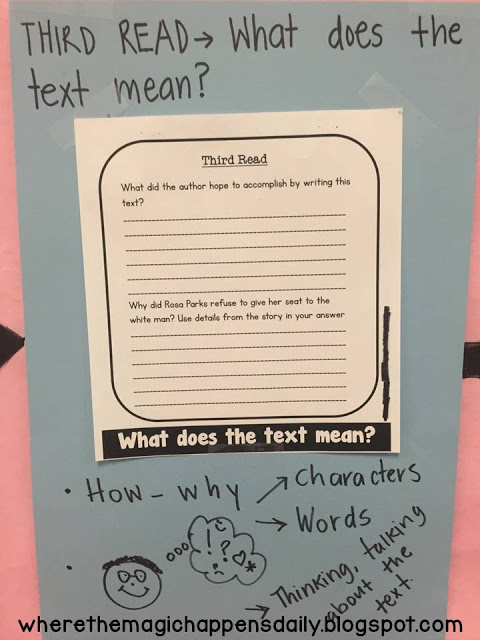


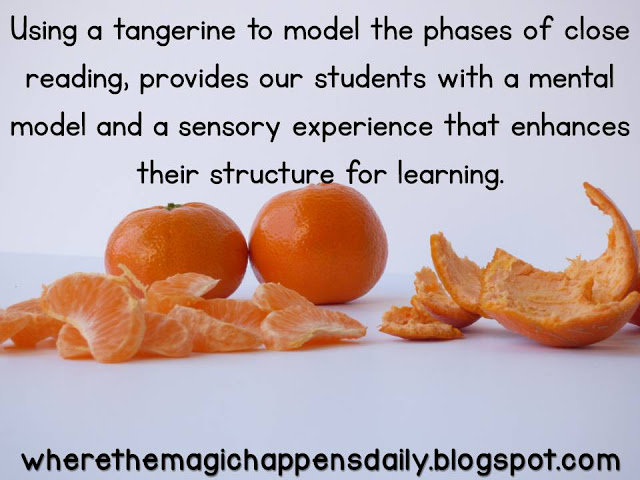


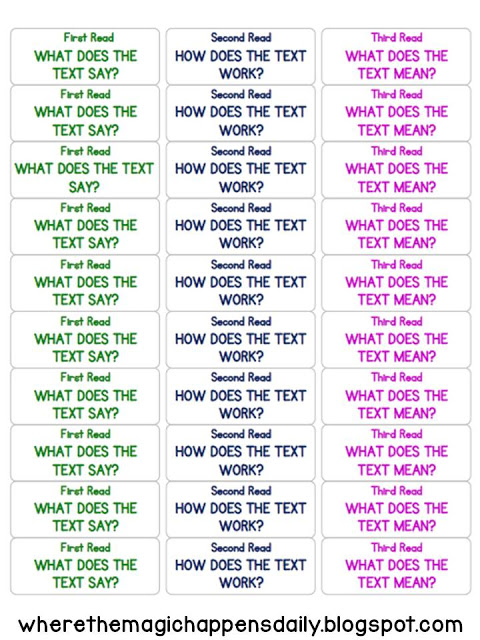
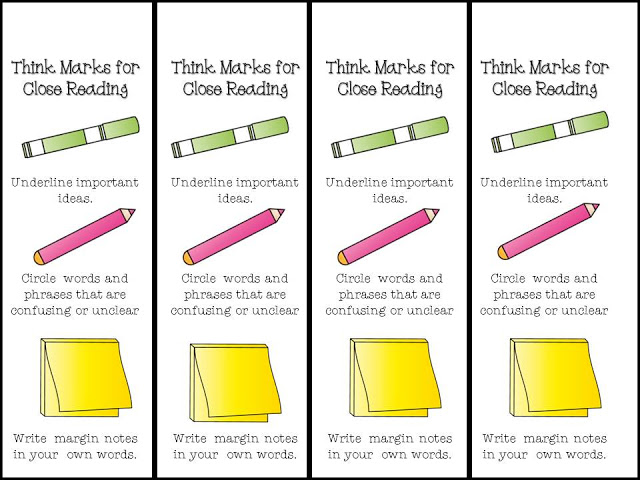
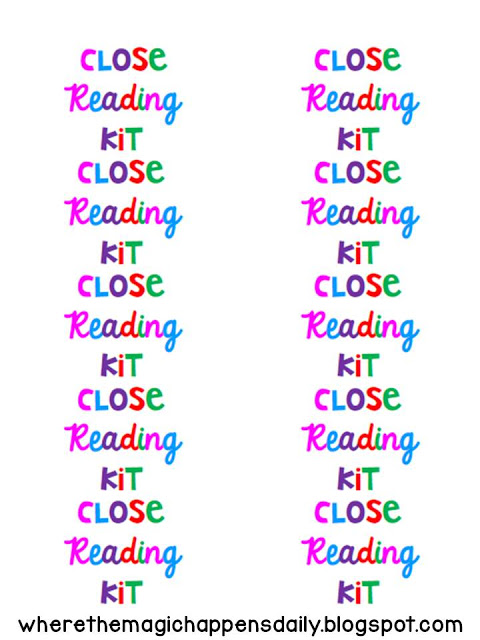


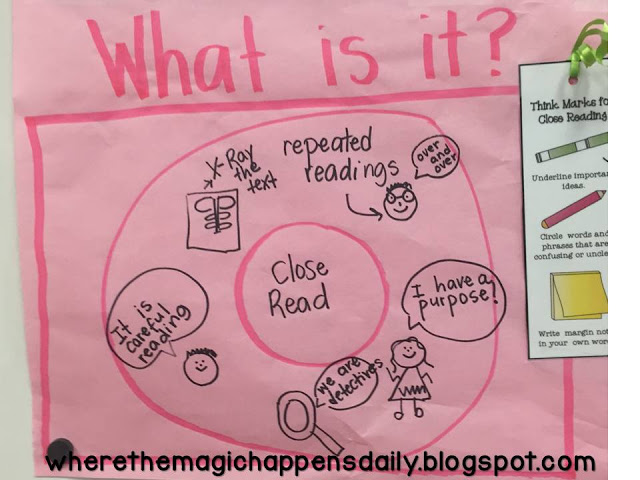



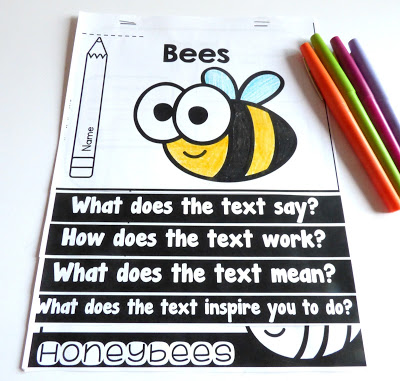
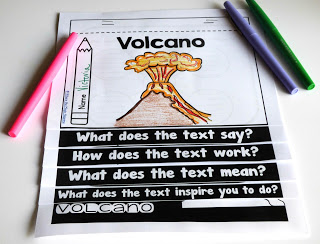

[…] ☻ General Annotating – This is the most common type of annotation in close reading that you see shared on blogs, articles, and Pinterest. This type of annotating is when the student reads the text with the purpose of simply understanding the gist of the topic or story. The students use general annotating symbols and directions that work with any text (making predictions, making connections, interesting facts, etc.). This type of annotating works well when the students are reading a text one time for a single purpose or during the initial read of a text. This is the type of annotating we teach our younger readers during shared or guided reading lessons.☻ Specific Annotating –When students complete this type of annotating, they have a specific purpose in mind and are looking for textual details, facts, and evidence that align with that purpose. As you can probably already tell, this type of annotating lends itself to close reading because each read of the text has a new purpose. Specific annotating works well for literature circle discussions and literary analysis so is more appropriate for readers who are a bit more sophisticated in their reading purposes. Learn how to set-up your close reading routines HERE!! […]